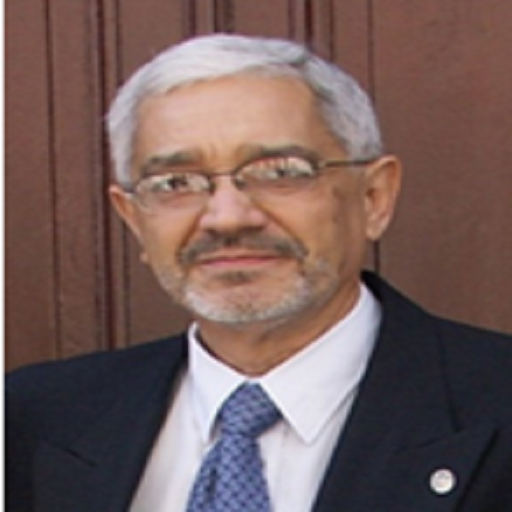Topics
Applied Physics: Lasers and Accelerators, Condensed Matter, Soft matter and materials science

Title: Natural Zeolite Engineering NatZEng®: Applied Sciences to design and develop new zeolitic materials for human health, agriculture, and environment
Abstract: The traditional utilizations of natural zeolites are those in which the mineral is used after a minimum processing: grinding, particle size classification, drying and milling. Apparently, these utilizations lack a scientific and technological support to explain the mechanisms of action of the mineral and guarantee the reproduction of results. In summary, the natural zeolite raw material is used directly despite the low homogeneity of its physical and chemical properties. The scant scientific studies and their low financial support has limited the achievement of an exhaustive knowledge of these minerals. Then the design of new materials and their utilization technologies based on natural zeolites require a change of approach. We have pursued this line of R&D+innovation with Cuban natural zeolites since 1980 (G. Rodríguez-Fuentes, PhD thesis, 1987) to obtain new zeolitic materials. We have used all the potential of Physics, Chemistry and Engineering converging to Material Science to obtain new zeolitic materials: ion exchange, salt occlusion, adsorption of liquid and gas phases, hydrothermal modification without crystal phase transformation, and taking the crystal transformation to a different zeolite or mineral phase, mechanochemical reactions to obtain micronized material. These studies were assisted by computational simulation of zeolite structures, and the modeling of the reactivity, but all are founded on Basic Sciences.
The concept of Natural Zeolite Engineering (NatZEng®) can be expressed as the adequate combination of chemical treatment with substances selected for their own characteristics, and physical treatment of the selected zeolitic mineral, according to the preconceived design of the new zeolite and its properties for a given purpose. The specialists of the NatZEng® laboratory of University of Havana have developed this line of R&D+i and they are leader of the innovation processes based on the properties of Cuban natural zeolites. They are well recognized as natural zeolite expertise by their pairs of natural zeolite society. NatZEng® laboratory develops three macro projects: 1) NEREA® products for Agriculture: substrates, fertilizers, and pesticides. 2) Active ingredients for HEALTH. Design and formulations of drugs based on zeolitic active principles: a) antidiarrheal, antacid, cholesterol-lowering, anti-hyperglycemic and microbicide to treat superficial infections drugs; and b) drinking water purification systems. 3) Microporous Materials to remove pollution from the ENVIRONMENT. These R&D+i projects began in the geological detailed study of the zeolite deposit, following the deeply characterization of the zeolite raw material and its physical and chemical properties using Material Science methods and analytical tools.
The technological innovations of NatZEng® laboratory can be categorized in four major activities: 1) Scientific knowledge, 2) Human capital development, 2) Intellectual property, and 4) Business. In summary: 5 granted patents (one European), 2 patent applications in Cuba and Canada, 1 industrial model, 8 industrial secrets, 15 technology transfers to productive sector, 3 agricultural products registrations, 1 drug registration, 1 health record, 1 Cuban Standard, 8 registered trademarks (+3 requested), more than 150 published scientific articles, about 300 presentations at scientific events, 9 books and monographs, 12 master's theses, 16 PhD theses and one doctorate in sciences. Its results have received 12 awards from the Academy of Sciences of Cuba (ACC), and from the Ministry of Science, Technology and Environment (CITMA) Special Award for Highest Economic Impact, and National Award for Technological Innovation, Cuba.
The lecture will present the NatZEng® methodology, the science that support each new nanostructured zeolitic material, the technologies of manufacturing and utilization, the scale up production, the innovation to introduce in the market, and the knowledge acquired.
Bio: Download CV here
Applied Physics: Lasers and Accelerators, Condensed Matter, Soft matter and materials science
Organizing Committee will send each paper to 3 independent reviewers, experts in the area of the paper. So, each paper will be evaluated by three independent experts according to the following Criteria...
Registration Fees...
The Proceedings of APSAC will be published by...
The Conference will be held in the...
The Proceedings of APSAC will be published by...
Check our Special Sessions here
Call for Sessions, Workshops, Minisymposia
We encourage you to participate in our conference with a Session,
Symposium, or Workshop. There are several benefits for the organizers:
1. A Honorarium for the Special Issue organizer (i.e. Guest Editor) provided that his Special Issue will collect a minimum of 5 registered papers He can use this Honorarium to travel to the conference!
2. Successful Special Session organizers will be included in the Steering Committee of the conference of the next year.
3. Successful Special Session organizers will receive a volume in Hard Copy of the Proceedings of our previous conferences.
4. Successful Special Session organizers will receive a Certificate for the organization of their Special Session by the General Chairman.
5. Successful Session organizers will be elevated to Plenary Speakers for our conference of the necxt year.
6. Their sessions and their names will appear on the web.
If the authors have already uploaded the same papers independently via the web, then, these papers cannot be considered for your Special Session, Workshop, Minisymposium.
Send us the Title / Organizer / Aim / Topics for your Special Session
by email: apsac.conference@gmail.com like these examples
Copyright © - All Rights Reserved - APSAC